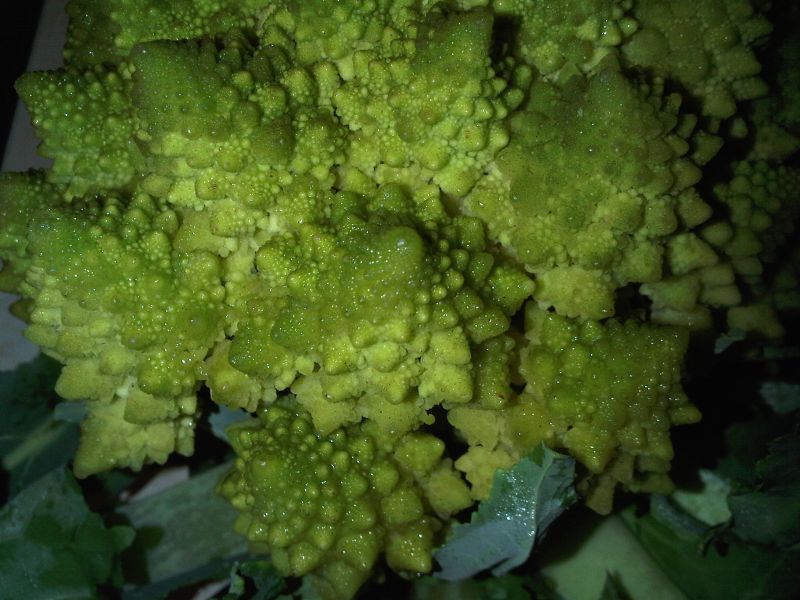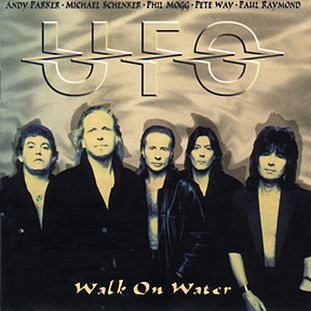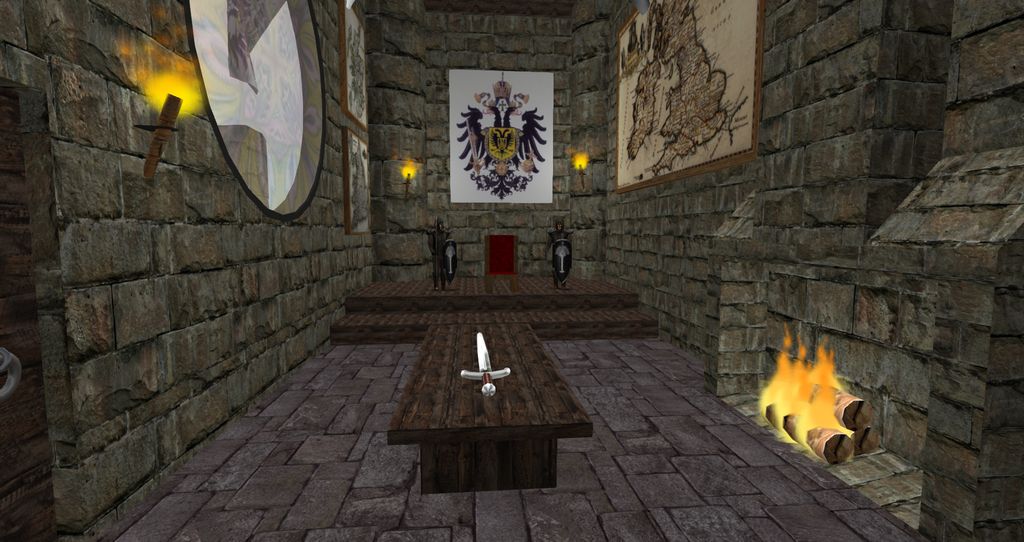Much to my surprise, my mum has turned out to be a budding mathematician and for dinner on Christmas Eve we were presented with Romanesco Broccoli! I had forgotten what a beautiful vegetable it was (the last one I’d seen I had bought from Tesco for a lecture on fractals about 10 years ago). For anyone of a mathematical persuasion the broccoli (or cauliflower as I prefer) is one of Nature’s finest examples of a fractal, although it is usually it’s poor relation the humble cauliflower that is used as an everyday example (with fractal dimension approximately 2.88). Here it is pre-cooking:

and a close up to show how the pattern repeats at smaller scales:

The science bit:
Fractals can generally be characterised as patterns in 1, 2, 3 or higher dimensions that have the following properties:
- Complex structures produced by simple rules
- Are self similar (i.e. “made up of smaller copies of itself”)
- Has infinitely fine structure (keep magnifying and you see more and more detail)
- Recursiveness (a mathematical fractal is produced by repeating the simple rule at the top of this list over and over)
- Non classical geometry (the geometry cannot be explained in classical terms, for example many fractals in 2D will have zero area by most normal measurement of area)
It is still no real rival to the renowned Mandelbrot Set, but it probably tastes a lot better.










